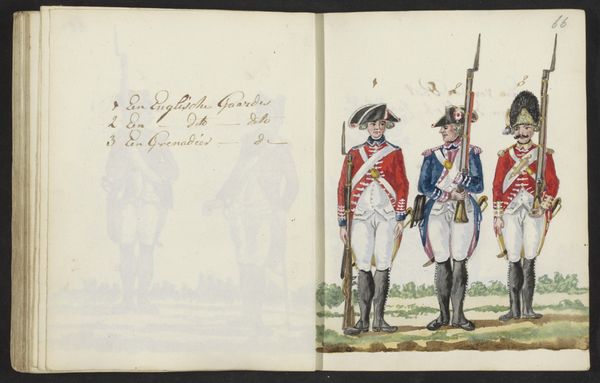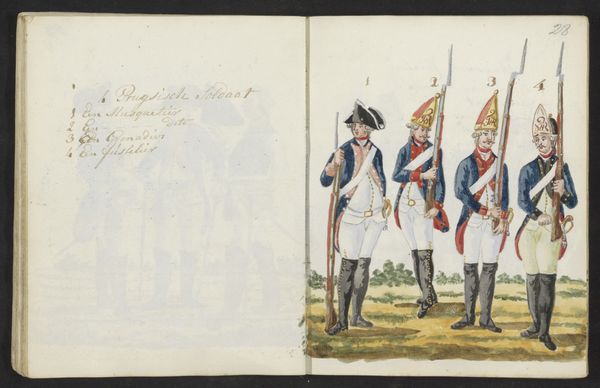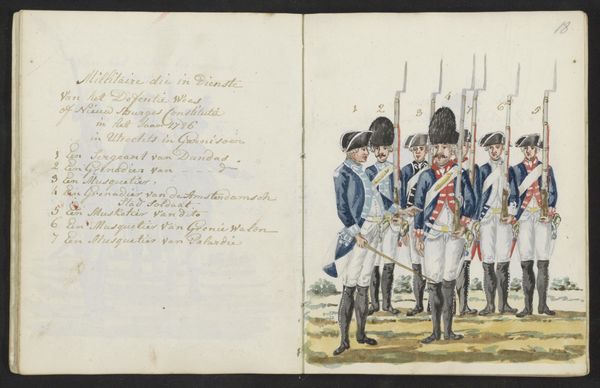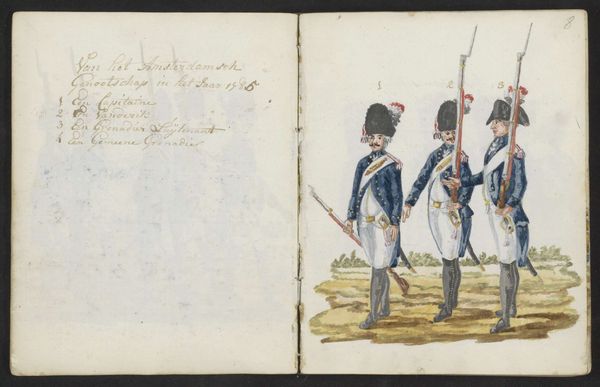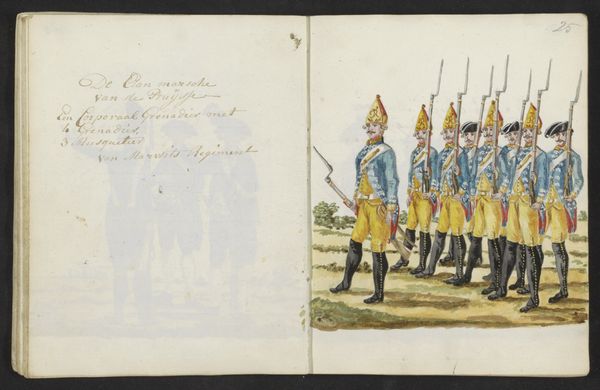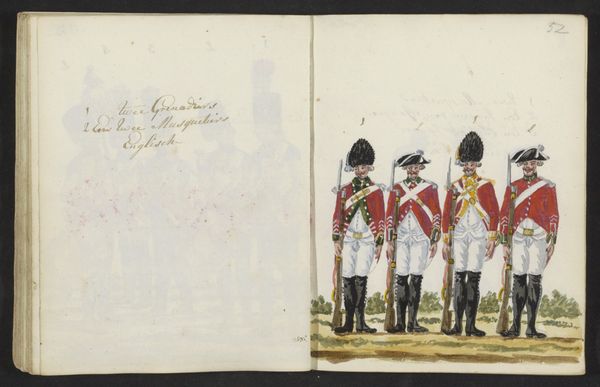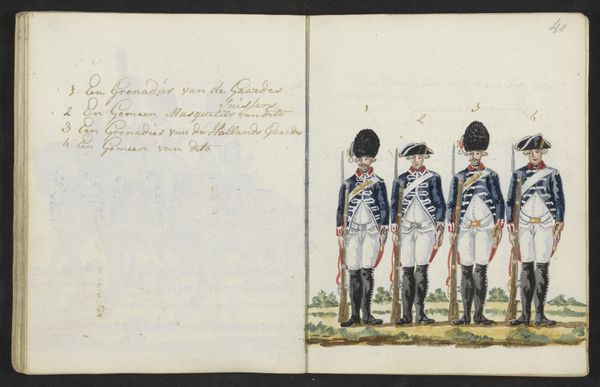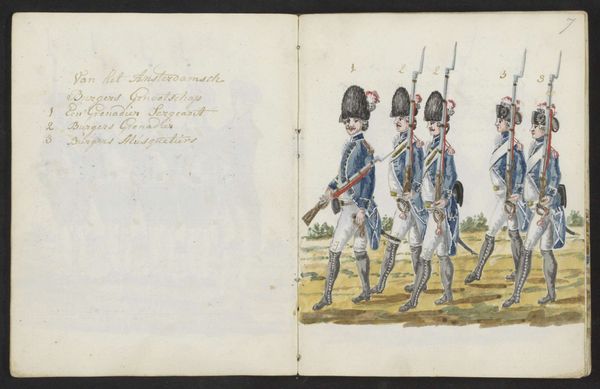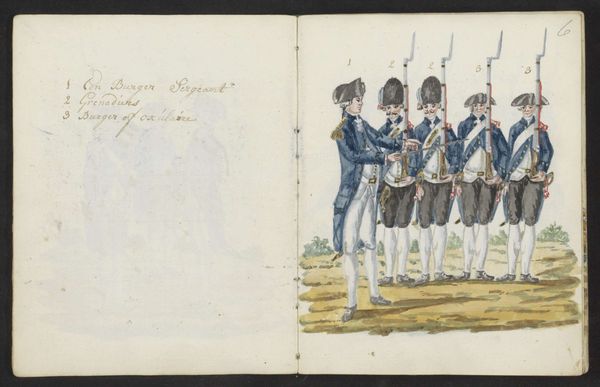
drawing, coloured-pencil, watercolor
#
portrait
#
drawing
#
coloured-pencil
#
watercolor
#
coloured pencil
#
watercolour illustration
#
genre-painting
#
history-painting
Dimensions: height 197 mm, width 310 mm
Copyright: Rijks Museum: Open Domain
Editor: So, here we have S.G. Casten’s "Uniformen van Mecklenburg en Waldeck," dating from 1795 to 1796. It’s a watercolor and coloured pencil drawing of military uniforms. What strikes me is how…standardized they appear, yet there are subtle variations in the details. What do you see in this work? Curator: I see a visual document deeply embedded in the socio-political context of its time. Consider the late 18th century: Europe was on the brink of revolutionary upheaval. These meticulously rendered uniforms speak to a rigid social hierarchy and the ever-present threat of conflict. Each variation in colour or trim represents subtle distinctions in rank and regional identity, carefully maintained through strictly enforced modes of dress and appearance. How might this standardization of the body relate to larger projects of state power? Editor: That's a really interesting point. I was focusing on the visual aspects, the neat rows of figures and their precise rendering. But thinking about them as representatives of state power makes me consider things like...control? Curator: Exactly! Control is key here. Think of Michel Foucault's concept of "biopower" - the ways in which the state exerts control over the bodies of its citizens. These uniforms aren't just about aesthetics; they are instruments of power, designed to instill discipline and obedience, suppressing individuality and constructing a collective identity. The fact that they are carefully drawn like scientific specimens reinforces the sense of order and control. What does that say to you about Enlightenment ideals during that time period? Editor: Wow, I never considered them as specimens before! It makes you question the concept of individuality, if everyone’s meant to look and behave a certain way. I always thought about enlightenment more as personal freedom. Curator: It's about questioning the narratives we’ve inherited and revealing how seemingly objective representations are always entangled with power. Hopefully, this artwork can show us the complicated interaction between these political expectations, especially as it represents masculine figures of the 18th Century. Editor: This has really opened my eyes to how even something seemingly straightforward can be deeply political and historical! Thanks for that! Curator: Indeed, looking beneath the surface can allow for a deeper and fuller comprehension.
Comments
No comments
Be the first to comment and join the conversation on the ultimate creative platform.

